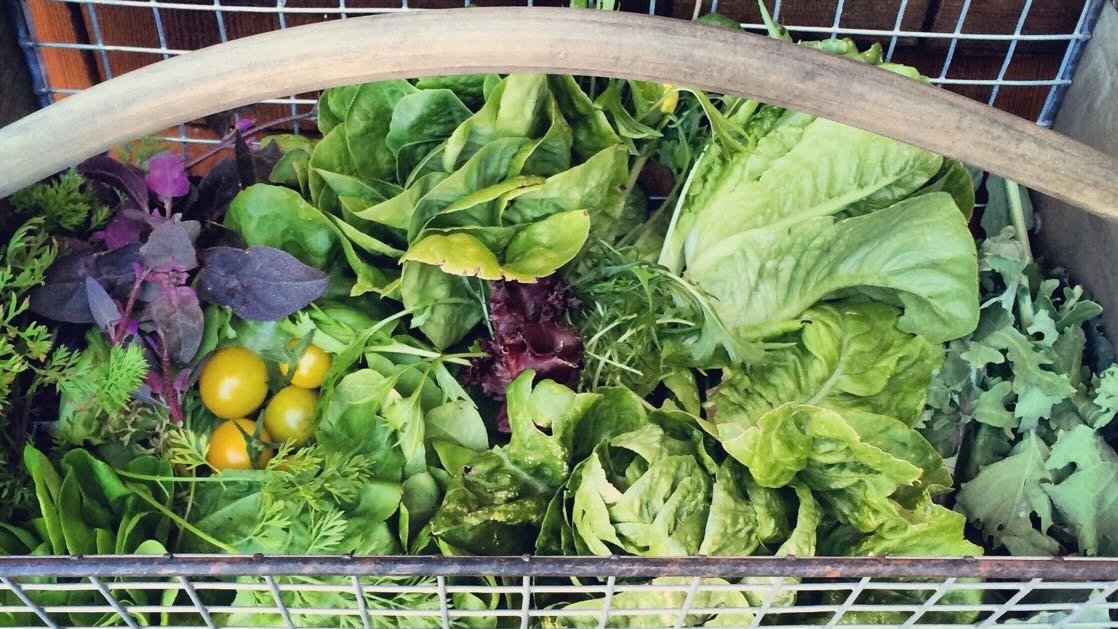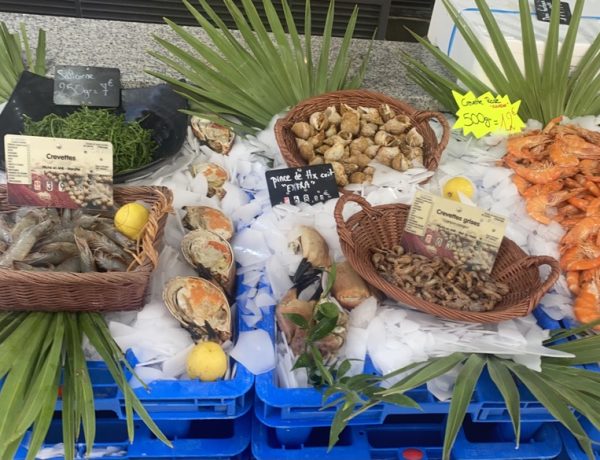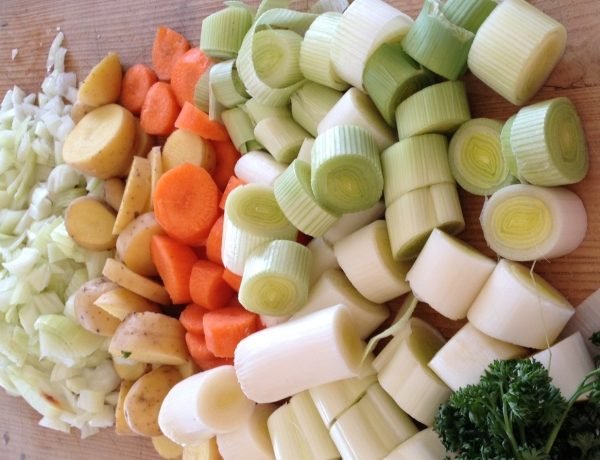I’ve lived in France for more than two decades now, and the French healthy eating habits I stumbled into all those years ago still shape my daily life. Some of the habits we’ve adopted as a family, others… well, only some of the time. But even applying a few has allowed us to enjoy really good food while maintaining a sense of balance and wellbeing that I never quite managed in my twenties back in the U.S.
What continues to surprise me is how uncomplicated French habits are. No one here is counting macros or eliminating entire food groups. There are no “programs,” no color-coded containers, no apps telling you when to eat. Everyday meals are simple and rooted in real, recognizable ingredients. Yes, there’s a growing trend toward reducing meat and dairy, but cutting out carbs or banning dessert? Almost unheard of.
And these habits aren’t reserved for one demographic. They’re part of the rhythm of life in France — in Parisian apartments, in tiny Alpine villages like mine, in families with toddlers and families with teenagers. French healthy eating habits are incredibly accessible.
If you’re curious about adopting a few French healthy eating habits in your own home, start with the ones that feel easy or natural. If something feels too rigid or complicated, skip it. French habits only work because they’re sustainable. As with any shift, consistency matters — but rigidity never has.
For an overview of everyday French wellbeing habits, start with → The French Approach To Wellbeing.
Eating at Mealtimes Only
This is, for me, the holy grail of French eating habits — the one that makes all the others possible.
When breakfast, lunch, and dinner are the only times you eat, something magical happens: you actually arrive at meals hungry. Not starving, but ready. The French sit down at a table, usually with other people, and truly enjoy the food in front of them. Hunger amplifies pleasure.
And without grazing all day, you naturally reduce the “invisible calories” that add up without you noticing. This is one of the reasons France remains one of the healthiest countries in Europe, with comparatively low obesity rates in both adults and children.
Lunch Fit for a Queen
The French don’t wake up and eat a giant breakfast. Most people have something light — a small slice of baguette with butter and jam, plain yogurt, a bowl of fruit, or a bit of both. The real meal of the day is lunch.
Now, you’ve probably heard about leisurely two-hour French lunches. Those absolutely exist… but mostly on weekends, holidays, and business lunches. On a normal weekday, lunch is closer to one hour. But crucially: it involves sitting at a table, not leaning over a laptop. And it’s a full meal — a protein, vegetables, grains, maybe a small dessert or piece of fruit.
Because the French don’t snack between meals, this hearty lunch easily lasts until dinner. And dinner, unless you’re a guest at someone’s home or at a restaurant, is usually lighter.
Whole Foods, Mostly Cooked at Home
After 22+ years here, I think I’ve earned the right to generalize a little: French home cooking is incredibly simple. Real ingredients, cooked in straightforward ways.
Think:
- an omelet with roast potatoes and green salad
- fish roasted on a tray with vegetables
- lentils with bacon and mâche
There’s nothing elaborate about these meals. They’re just fresh, whole foods prepared without fuss — and without labels.
Even homemade desserts follow this rule. My mother-in-law’s chocolate mousse? Two ingredients: eggs and dark chocolate. A fruit tart is just seasonal fruit, pastry, and a sprinkling of butter and sugar. Somehow, the simplicity makes it feel luxurious.
Try one of the most popular vegetable soups when you need the vitamins or you’ve overindulged → French Detox Soup (My Mother-In-Laws Secret Weapon).
And learn more about French women’s favorite eating style → Why French Women Love The Mediterranean diet.
Awareness of How Food Feels
One of the very first things I noticed in France is how attuned people are to how food makes them feel. The French don’t talk about “clean eating” or “overeating” — they talk about being bien (well), satisfaite (satisfied), or simply plus faim(no longer hungry).
They stop when they reach comfortable satisfaction, long before they’re full. They know which foods bloat them and which foods give them energy. It’s not restriction — it’s awareness.
This makes room for pleasure. A French friend will easily decline a second helping to save space for cheese and dessert — or skip both and go straight to coffee if that feels better. Meals are meant to be pleasurable, not coma-inducing.
Meet my French friends here and read more on → What French Women Eat In A Day.
Do Not Drink Your Calories
This habit is everywhere in France, and it starts in childhood. At lunch and dinner, the French drink water or wine — and often only water. You’ll rarely see soft drinks or fruit juices on a dining table. They’re considered treats, not beverages to accompany a meal.
In school cafeterias, the only drink offered is plain water from the tap — no milk, chocolate milk, or juice cartons. This single habit makes an enormous difference in children’s overall calorie intake and sets them up for mindful drinking habits later in life.
More From France
If you’re curious about how France nurtures healthier habits — from school lunches to everyday food, movement, and wellbeing — I share practical tips and stories each month. Sign up for the free newsletter below and receive my guide, The French Guide to Everyday Wellbeing, straight to your inbox. Merci!




